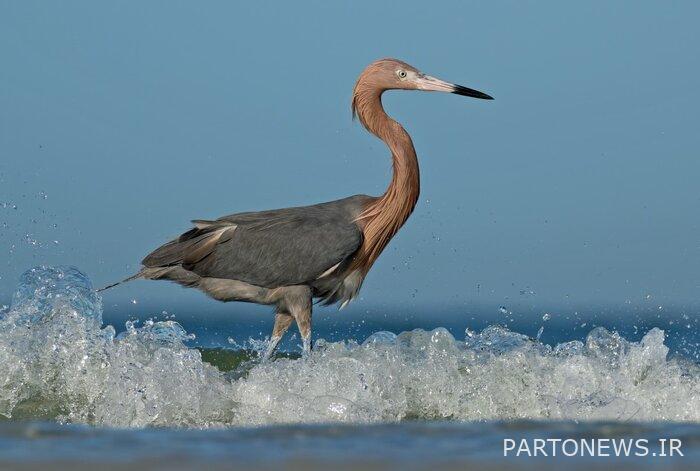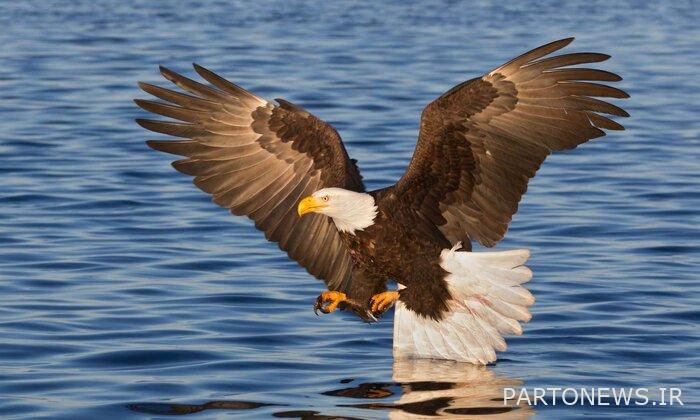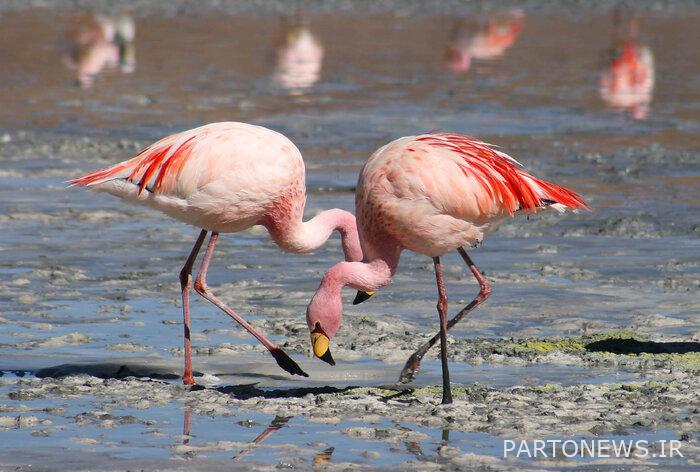The reverberation of 150 species of migratory birds in the marine forests of Qeshm Island

The environmental director of the Qeshm Free Zone Organization announced the sound of 150 species of migratory birds with the arrival of beautiful birds such as gray-footed pelicans, cormorants, bee-eaters, chakauks and flamingos in the Qeshm Mangrove Forest Biosphere Reserve and its wetlands.
Seyyed Mohammad Hashem Dakhte, in an interview with IRNA reporter on Saturday, added: the Hara Mangrove Biosphere Reserve and its wetlands are one of the best habitats for migratory birds in the country, where birds from different parts of the world, especially Hemisphere smolts migrate to this region in large flocks for wintering.
He continued: The drying up of some lakes inside the country, the pollution of some habitats and the crowded edges of some of them in Iran and the world have turned Qeshm into one of the best habitats.
The environmental manager of Qeshm Free Zone Organization explained: the high diversity of aquatic life and seasonal ponds, the diversity of habitats, the tranquility of the environment, being far from the reach of humans and the appropriate temperature in the winter season are other factors that bring rare migratory birds to this region every year. drags.
Dakhte added: Nearly half of Iran’s birds are present in Qeshm Island according to the season, and so far more than 250 species of migratory and native birds have been identified in different habitats of Qeshm Island in four seasons, and in the autumn and winter seasons, the number and species of birds Muhajir is more than the warm half of the year. Breeding of land bird species in Qeshm is an exceptional case and according to available statistics, there are more than 100 species.

He said: Some species, such as the southern little spotted owl, Salim the crab-eater, and the long-legged pelican, are also of interest in Iran and the Middle East due to their limited number.
The director of the environment of the Qeshm Free Zone Organization added: In the Qeshm Global Geopark area, the blue falcon was seen for the first time in Qeshm and (Iran) in 2002 and it was recorded that they visit Qeshm Island every spring to breed.
He stated: the existence of very suitable sand and mud beds and mangrove trees in terms of nutrition for a large number of birds such as gray-footed pelicans, cormorants, herons and paddle-tips, great flamingos, a wide range of birds near the open water such as salims, waterfowls And dozens of species of sea swallows and swallows are also very important.
Dakhte announced: The best time for birdwatching in Qeshm Global Geopark is autumn and winter, when ornithologists and domestic and foreign tourists can see a variety of prominent birds, including the desert white-throated cuckoo, the nectar-eater, the desert cuckoo, the dagger-tip, and the stone-eyed cuckoo. , cormorants, and all kinds of herons to observe closely.

He stated: There are many types of falcons, including falcons, sea hawks, falcons, all kinds of falcons, and eagles, including the great spotted eagle, the osprey, the golden eagle, the plain eagle, as well as the harriers and harriers, among others. The birds of Qeshm Island Global Geopark are the birdwatchers.
According to IRNA, bird watching is one of the branches of nature tourism and ecotourism and is different from ornithology. A bird watcher only watches them in nature without any capture or interference in the natural life of birds, but an ornithologist closely examines the genetics, habits and behavior of different species of birds based on scientific research.
Bird watching is the pleasure of observing birds without touching them in their natural habitats. In this way, the audience observes the birds and enjoys watching them. Today, bird watching is the most popular branch of nature-based tourism in the world, which plays an important role in protecting the natural habitats of birds in addition to attracting tourists and attracting the attention of different segments of society.
Nature tourism has principles and rules based on respect for natural resources, wildlife and the environment, and birdwatching etiquette, in addition to all of this, emphasizes that tourists who enter nature should not approach bird nests, should not touch bird eggs, should not Do not interfere with their feeding, do not use noise to attract birds or disturb their peace.

At present, bird watching has even flourished as an industry in most countries of the world, and people watch birds for free time, and if they are more professional, they also photograph them. built to enjoy and watch birds and take advantage of their potential capacity in research, education and spending leisure time.
The Persian Gulf, with an area of nearly 237,473 square kilometers, is located between 24 and 30 degrees and 30 minutes north latitude and 48 and 56 degrees and 25 minutes east longitude from the Greenwich meridian, and the beautiful island of Qeshm is like a jewel on the expanse of waters. Its azure shines.
Having more than 900 kilometers of sea border from the eastern coast of the province (Jask) in the Oman Sea to the blue shores of the Persian Gulf in the east of the province (Parsian) and having 14 islands in the Persian Gulf, Hormozgan province is one of the most important and strategic provinces. It is Iran that has unique attractions such as unique Hara forests and the world’s finest pearls and dozens of historical and natural monuments.
These days, with the arrival of migratory birds to Qeshm Island, the land of seven wonders, the beautiful landscape of the mangrove forests in the northwest of this island, as one of the spectacular attractions of the Persian Gulf, attracts local and foreign ornithologists and researchers.
Qeshm is the largest non-independent island in the world and has the most beaches in the country, and every year it welcomes migratory birds from all over the world and travelers and tourists interested in this field.

